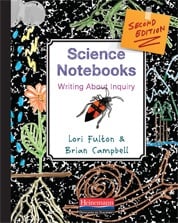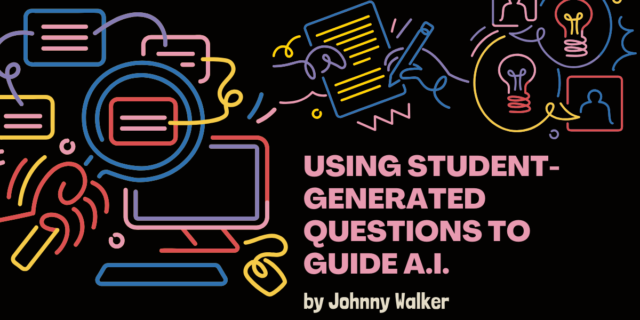
The bestselling Science Notebooks has inspired and equipped thousands of teachers to use science notebooks to help students develop their thinking about scientific concepts while exercising their language skills. In today’s post, authors Lori Fulton and Brian Campbell reflect on effective uses of science notebooks, the role of science in our classrooms, and how science notebooks can support outstanding instruction across the curriculum.
What are the most important changes you’ve seen in science instruction and the use of science notebooks over the last decade?
One of the most important changes is using the information within science notebooks for formative assessment that drives future instruction. This instruction can be related to content, scientific practices, communication, or notebook skills. Another important change relates to explanations: having students explain their thinking by making claims supported by evidence and reasoning. Notebooks need to go beyond simply recording what is being done in science to capturing what the students are thinking/learning about science.
Many elementary teachers feel their schedules are squeezed and don’t feel they have time enough for science instruction. What would you say to those teachers?
Kids love science—there is nothing like watching a butterfly emerge before your eyes or feeling a surge of excitement as you mix ingredients that result in a chemical reaction. This is what excites students, makes them want to be in school; they need real experiences about which to read and write. As teachers, we want to capitalize on this excitement and move our students’ thinking forward. While it does feel as though science is being squeezed into smaller and smaller time frames these days, we hope the Next Generation Science Standards will push science back onto the stage with mathematics and language arts and make science an important part of the school day again.
How do science notebooks fit with state and national standards? And do they fit with other curriculum areas?
There is a natural link between science notebooks language arts or standards-based movements like the Common Core. Children need to read, write, and speak about—and listen to—something real; science can be that something real. When students are actively engaged, the science notebook is a tool for recording their ideas and making sense of their thinking; they can then refer back to the notebook for evidence to support their thinking and use that information to build a logical argument.
What’s one of your favorite things you’ve ever encountered in a student’s notebook?
Every student’s notebook is different—and distinct. We can pick up a notebook and without looking at the cover know exactly whose it is. It isn't what a student does to remember content but what they do with that content on their own that intrigues us. One student maintained a running narrative during each investigation. Apparently, inaccurate directions were given at one point, because she wrote, “Had to stop experiment. Mr. Campbell messed up. Starting over.” She felt free to record what was important to her as a learner. This freedom was very different from what either of us experienced as young learners but something we both thought was important then and think is even more important now.
What is one thing you’d like to leave teachers with about teaching science and using science notebooks?
Remember, it is first and foremost about science and about students’ learning. As teachers, we want to know what our students are thinking and what they are capable of doing. Too often, notebooks become a place to record what was done in science that day. The science notebook needs to go beyond what was done to what was learned. Once student thinking is represented in this way, the notebook becomes a learning tool both for the student and for us. Our goal is to use that information to take students further in their thinking.
♦ ♦ ♦ ♦
 Click here to learn more about Science Notebooks and to read a sample from the book.
Click here to learn more about Science Notebooks and to read a sample from the book.
Lori Fulton is an Assistant Professor of teacher education at the University of Hawai‘i at Manoa. A former elementary teacher, she has been involved in the process of teacher change and professional development in the area of science for over 15 years.
Brian Campbell is a curriculum developer at the University of California, Berkeley where he focuses on creating instructional materials and professional development opportunities for science in elementary schools. He works with teachers and districts to refine the use of science notebooks in classrooms focusing on formative assessment and the connections to language arts.


